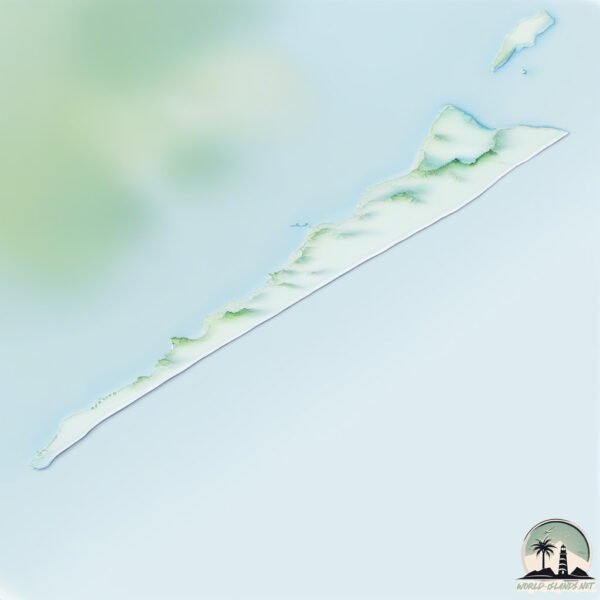Welcome to Galveston , a Temperate island in the Gulf of Mexico, part of the majestic Atlantic Ocean. This guide offers a comprehensive overview of what makes Galveston unique – from its geography and climate to its population, infrastructure, and beyond. Dive into the details:
Geography and size of Galveston
Size: 105.4 km²Coastline: 190.6 kmOcean: Atlantic OceanSea: Gulf of MexicoContinent: North America
Galveston is a Large Island spanning 105 km² with a coastline of 191 km.
Archipel: –
Tectonic Plate: North America – Covers North America and parts of the Atlantic and Arctic Oceans, characterized by diverse geological features and varying levels of seismic activity.
The geographic heart of the island is pinpointed at these coordinates:
Climate and weather of Galveston
Climate Zone: TemperateClimate Details: Humid Subtropical ClimateTemperature: Hot Summer
Climate Characteristics: With continuous rainfall and hot summers, this climate is common in some coastal regions, supporting diverse vegetation.
Topography and nature of Galveston
Timezone: UTC-06:00Timezone places: America/ChicagoMax. Elevation: 10 m Mean Elevation: 4 mVegetation: ShrublandTree Coverage: 20%
The mean elevation is 4 m. The highest elevation on the island reaches approximately 10 meters above sea level. The island is characterized by Plains: Flat, low-lying lands characterized by a maximum elevation of up to 200 meters. On islands, plains are typically coastal lowlands or central flat areas.
Dominating Vegetation: Shrubland
Vegetation: 14 vegetation zones – Exceptionally Diverse Island
Infrastructure and Travelling to Galveston
Does the island have a public airport? no .
Does the island have a major port? yes .
The mean population of Galveston is 565 per km². Galveston is Densely Populated. The island belongs to United States of America .
Continuing your journey, Goat is the next notable island, situated merely km away.
TRAVEL GUIDE: Visiting Galveston Texas
Galveston Texas, Galveston Texas Beach, Galveston Texas Fishing, Galveston Texas History, Galveston Texas Vlog TRAVEL ...
TRAVEL GUIDE: Visiting Galveston Texas
Galveston Texas, Galveston Texas Beach, Galveston Texas Fishing, ...
Galveston Texas, Galveston Texas Beach, Galveston Texas Fishing, Galveston Texas History, Galveston Texas Vlog TRAVEL ...
Top 10 Best Things to Do in Galveston, Texas - Travel Guide 2024
Are you planning a trip to Galveston, Texas, and wondering what the ...
Are you planning a trip to Galveston, Texas, and wondering what the best things to do are in this charming coastal city? Look no ...
Galveston Island's Tourism History in UNDER 5 MINUTES | VisitGalveston.com
Galveston, Texas, is an island city that has weathered storms and ...
Galveston, Texas, is an island city that has weathered storms and emerged stronger than ever. From its bustling port days to the ...
United States of America is classified as Developed region: G7: Group of Seven – Major advanced economies, including Canada, France, Germany, Italy, Japan, the United Kingdom, and the United States. The level of income is High income: OECD.
News – Latest Updates and Headlines from Galveston
Stay informed with the most recent news and important headlines from Galveston. Here’s a roundup of the latest developments.
Loading...
Please note: The data used here has been primarily extracted from satellite readings. Deviations from exact values may occur, particularly regarding the height of elevations and population density. Land area and coastline measurements refer to average values at mean high tide.

